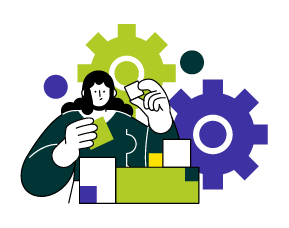Learning & Development (L&D) has rightly been viewed as an organizational necessity. Quite simply, there is a shared understanding that continuing to develop people is an ongoing need, as well as being just the right thing to do. What too frequently isn’t examined is whether that necessity is achieved as promised. There are problems with the existing L&D approaches, and what’s needed is to investigate whether L&D is actually delivering improvements. To put it another way, is there any impact of what L&D does?
Definition
 What does ‘impact’ mean? Quite simply, if we invest in an intervention, we should have evidence of an organizational change. It can range from people better able to answer questions, to delivering a whole new capability for the organization. For instance, shifting a focus from product to solution selling, or successfully instituting a whole new manufacturing process. Learning isn’t the only tool available, but typically it’s a fundamental part of a total solution.
What does ‘impact’ mean? Quite simply, if we invest in an intervention, we should have evidence of an organizational change. It can range from people better able to answer questions, to delivering a whole new capability for the organization. For instance, shifting a focus from product to solution selling, or successfully instituting a whole new manufacturing process. Learning isn’t the only tool available, but typically it’s a fundamental part of a total solution.
In short, we should be seeing some change. People should be doing things differently as a result of such an endeavor. Further, that new behavior should also have an outcome, ideally an improvement. We should, in fact, see a chain of changes, starting with changed behavior, which then leads to an improved outcome. That is an impact. It might be higher ratings for courses, but it’s better if it’s leading to changes in behavior, and ideally leading to movements in organizational metrics.
There are two major components to this. One is designing to achieve change. That is, we want to ensure that we’re engineering the needed change. The other is detecting if the change has been made. Along with these two major components is at least one other: an initial analysis that identifies the needed change. Once we know what should happen, and create an intervention, then we should check to see if it’s worked. The reality is that most endeavors don’t achieve full impact initially, and we must test and tune a bit as part of the process.
Practicalities
 Not all the reasons things aren’t working as well as they should have their roots in things L&D can affect. L&D’s range of solutions starts with learning interventions, trainings, and courses. To that, we should add times when the information doesn’t need to be ‘in the head’ and can be in the world; here we’re talking performance support. As Joe Harless famously said, “Inside every fat course there’s a thin job aid crying to get out.”
Not all the reasons things aren’t working as well as they should have their roots in things L&D can affect. L&D’s range of solutions starts with learning interventions, trainings, and courses. To that, we should add times when the information doesn’t need to be ‘in the head’ and can be in the world; here we’re talking performance support. As Joe Harless famously said, “Inside every fat course there’s a thin job aid crying to get out.”
However, there are interventions where L&D doesn’t possess the right solutions. Sometimes, people are rewarded differently than what is indicated. That’s an incentive problem. Other times, they could do the task if their life depended on it, but for whatever reason they’re doing it differently. That, too, likely isn’t a training problem. So, one point is for analysis to ensure that the needed impact is within the solutions L&D offers.
Once we’ve determined that the necessary solution is in L&D’s purview, then we can consider an appropriate solution. At the same time, we should also be establishing metrics that will assess whether the solution has been achieved. L&D’s impact should be a demonstrable change.
To date, the evidence is dubious at best. In a Harvard Business School paper, Beer, et al, suggested that a meta-analysis indicated only 10% of training interventions were worthwhile. That would indicate that 90% of training investments are wasted! Similar studies from the Association for Talent Development and Chief Learning Officer similarly indicate less than complete satisfaction with L&D efforts.
In short, L&D is not having the impact it should. The remedy is to be aware of what impact really is, design for it, and measure to achieve it.
In the ever-changing field of learning and development, effective tactics are essential for success. Read our eBook, Designing for Learning Impact: Strategies and Implementation, for a thorough how-to on creating learning experiences that genuinely have an impact. Discover how deliberate design and measurement may lead to significant organizational change. By embracing the eBook and seeing the possibilities for transformative learning inside your company, you can begin your road toward a more effective L&D program.

















